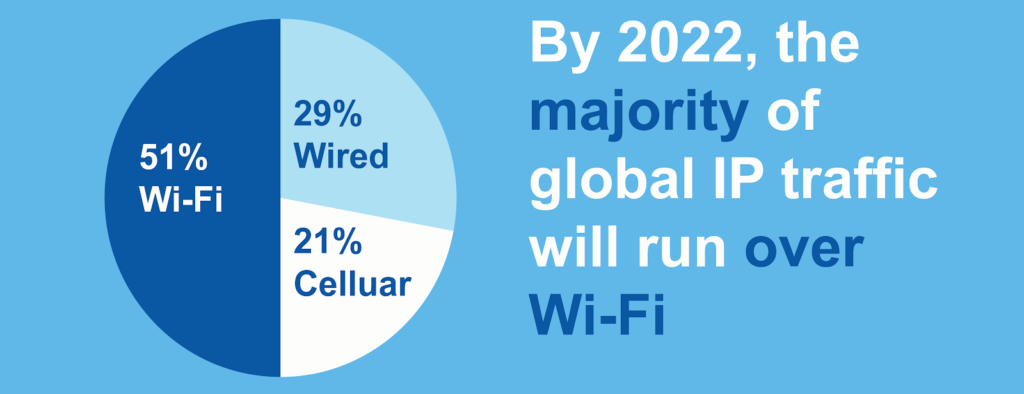Spectrum Policy
The Importance of WiFi in a 5G World
May 14, 2019
Share Article:
American consumers and businesses are at the beginning of a transition to a 5G world, one that is reliant on seamless, buffer-free connectivity and the real-time exchange of information and data. Crucial to the success of 5G is a sufficient supply of unlicensed spectrum to power a pervasive and robust WiFi network that will be needed to support it. This is why Charter is thrilled that the FCC is taking a fresh look at making available additional unlicensed spectrum in the 5.9 GHz band.
WiFi has become an engine of U.S. economic growth and is used to deliver reliable and secure connections to homes, businesses, hospitals, schools, and military bases in urban, suburban and rural communities across the country. In fact, Charter’s network currently supports approximately 250 million wireless devices and carries an estimated 80% of data consumed on mobile phones in our customers’ homes and offices. In addition, many U.S. critical infrastructure systems rely on WiFi to carry out financial transactions, operate railways, manage logistics and safety systems at airports, track and monitor container ports, and increase the reliability of public safety networks. As 5G networks are deployed and consumers and businesses rely on more and more connected devices to power the Internet of Things and automation, among other advances, WiFi will need to help carry significantly more data.

Courtesy of WiFi Forward
The current supply of unlicensed spectrum for WiFi is approaching exhaustion, so quick action is needed to open up hundreds of megahertz of more spectrum. The 5.9 GHz band, which was initially set aside for a particular failed automotive technology 20 years ago, and has been largely unused since, is the best and most immediate opportunity. The automotive industry has turned to a variety of alternative technologies and spectrum bands and the FCC recently increased exclusive vehicular radar spectrum by 4 GHz to promote continued auto safety innovation there. The 5.9 GHz band is located directly adjacent to the existing lower 5 GHz WiFi band, so opening it for unlicensed use would enable providers like Charter to quickly deliver enhanced WiFi performance with, in many cases, little more than a simple software upgrade. A recent RAND study found that opening the 5.9 GHz band for WiFi could produce an annual contribution to U.S. GDP of up to $105.8 billion.
Winning the race to 5G depends on a variety of technologies, networks and providers to deliver an enhanced connectivity experience and WiFi plays an integral role in enabling and producing the benefits Americans expect. As part of its 5G Fast Plan, the FCC is rightly taking the lead to identify viable spectrum for this next generation of connectivity, and reexamining the 5.9 GHz band is an important part of that objective. Letting this valuable spectrum remain unused any longer doesn’t just jeopardize the utility of WiFi of today, it risks undermining the technologies of tomorrow.
